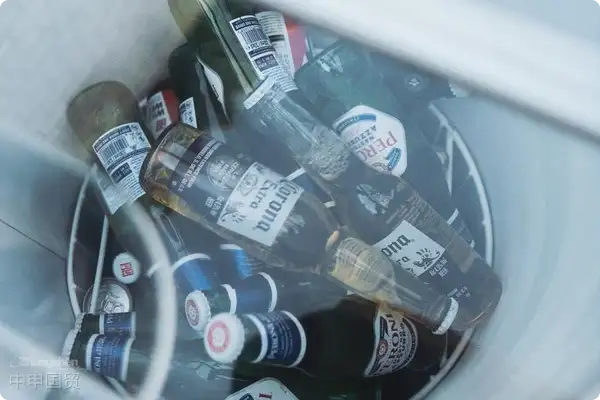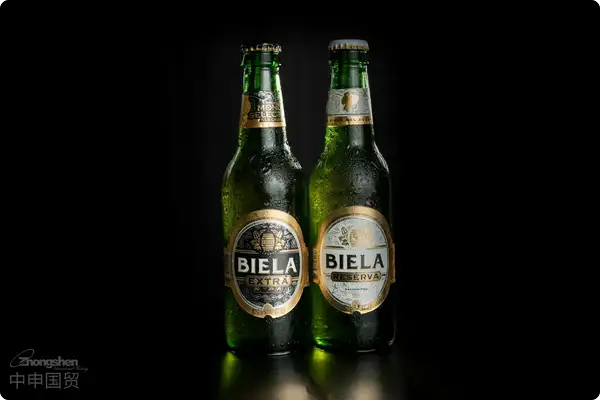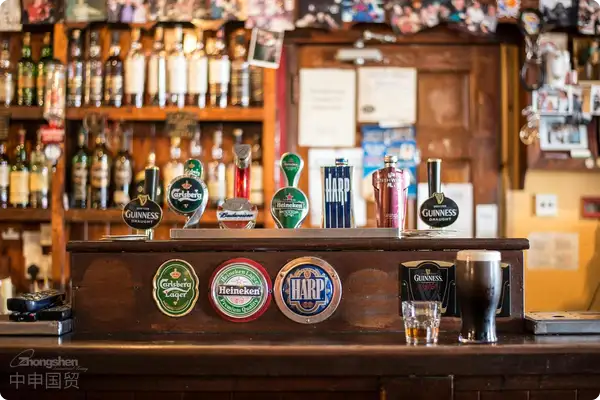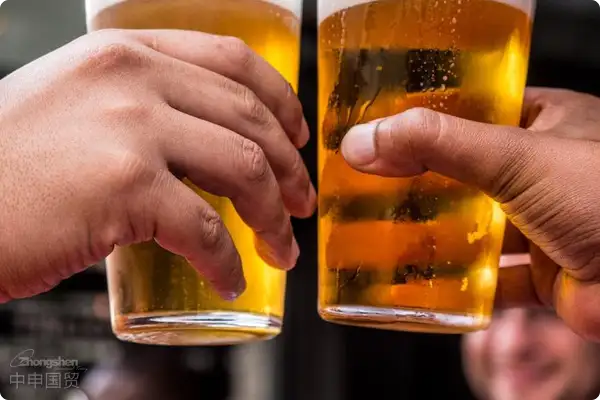Five hidden thresholds in beer import agency
亚洲春色另类小说校园 |
亚洲中文字幕一区二区三区四 |
久久精品国产亚洲av久 |
美美女高潮毛片视频免费 |
成人黄网站色视免费大全 |
精品国产乱码久久久久久软 |
日本人妻与家公的伦理片 |
丁香六月婷婷激情综合 |
在线小视频一区二区三区 |
中文字幕人妻一区二区人妻高清 |
国产精东av剧情在线一区二区 |
日本一区二区免费在线视频 |
精品亚洲国产成人痴汉av |
秋霞伦理日韩中文字幕av |
久久五月婷婷爱综合亚洲 |
国产成人麻豆午夜精品影院游乐网 |
精品国产污污在线18禁 |
欧美一区二区三高清在线观看
|
制服丝袜视频一区二区三区 |
国产精欧美一区二区三区久久 |
美女性黄久久久国产精品 |
中文字幕人妻一区二区人妻高清 |
日韩亚洲高清一区二区三区
|
91精品国产薄丝高跟在线播 |
欧美不卡一二三在线视频 |
国产自拍三级视频在线观看 |
亚洲av资源网站在线观看 |
亚洲国产精品久久久av |
亚洲午夜一级艳片欧美精品
|
欧美精品国产一区二区免费 |
青青草亚洲综合成人一区 |
亚洲欧美日韩在线精品2区 |
国产精品宅福利无圣光视频 |
小泽玛利亚的电影在线观看 |
亚洲欧洲成人va在线观看 |
欧美极品一区二区三区欧美大片 |
亚洲综合色一区二区三区另类
|
亚洲欧美日韩精品中文字幕在线
|
中文一区二区三区中高清免费 |
欧美极品色午夜视频在线观看 |
91精品人妻一区二区三区蜜臀 |
护士精品一区二区三区99 |
一本不卡欧美一区二区三区
|
日韩欧美国产在线看免费 |
中文字幕黄色在线免费观看 |
国产美女直播在线一区二 |
国产欧美日韩亚洲第一第二页
|
av电影在线观看中文字幕哦 |
久久精品亚洲欧美日韩精品中文字幕 |
国产农村妇女一二三区 |
国产一区二区三区色噜噜91 |
国产肉丝精品91一二区 |
久久精品久久久久一区二区 |
精品一区二区三区高潮视频 |
亚洲成人精品国产一区二区 |
亚洲熟女熟妇av一区二区三区 |
亚洲另类国产精品一区二区三区
|
最新日韩欧美不卡一二三区 |
国产成人精品亚洲高清在线 |
国产无人区码一码二码三码区别
|
亚洲一区二区三区欧美精品 |
亚洲精品成人av一区二区 |
亚洲国产av一区二区三区 |
欧美日韩久久久一区二区三区 |
亚洲午夜福利国产门事件 |
日韩一区二区三区四区在线观看视频 |
婷婷激情综合亚洲五月色 |
国产电影一区二区三区在线观看 |
久久精品国产亚洲av蜜屁股 |
亚洲欧美日韩综合视频免费看 |
美女露小粉嫩91精品久久久 |
五月婷久久不能精品视频 |
久久精品国产亚洲av蜜屁股 |
亚洲欧洲日韩国产免费 |
色综合天天综合网国产人 |
手机在线观看网址你懂的 |
国内偷拍高清精品视频免费 |
五月婷婷啪啪啪综合视频 |
国产自拍偷拍在线一区二区 |
五月开心婷婷六月丁香婷 |
欧美一区二区三高清在线观看
|
精品五月天草原婷婷在线视频
|
96国语自产免费精品视频 |
久久精品噜噜噜成人av |
国产精品免费不卡视频专区 |
色哟哟一区二区国产精品 |
尤物免费视频网站在线观看 |
日韩伦精品一区二区三区一级 |
日韩欧美亚洲乱码中文字幕 |
亚洲精品国产久久久久久 |
成人黄色小视频下载网站 |
国产一区二区精品久久呦
|
一本色道69色精品综合久久 |
91久久精品一区二区三区大 |
蜜臀av免费一区二区三区观看 |
我想看欧美一级特大黄片 |
适合一家人看的国产电影 |
精品国产18久久久久二 |
亚洲精品国产久久久久久 |
亚洲十八禁在线免费观看 |
久久999欧美日韩国产 |
中文字幕日韩高清在线视频 |
中文一区二区三区中高清免费 |
粉嫩一区二区三区精品视频
|
制服丝袜中文字幕一区二区 |
亚洲欧美日韩人成在线播放
|
午夜天堂av天堂久久久 |
久久精品一二欧美无婷婷 |
国产欧美国产精品第二区 |
五月婷婷网在线视频观看 |
99re热这里只有精品视频 |
欧美日韩亚洲中文字幕二区网址 |
欧美激情精品久久久高清 |
麻豆国产精品专区在线观看
|
韩国三级电影善良的嫂子 |
亚洲精品国产剧情久久9191 |
欧美日韩3一区二区三区精品 |
亚洲国产日韩欧美高清片 |
亚洲第一区欧美日韩在线 |
91精品久久久久久粉嫩 |
精品视频精品91美女视频 |
欧美日本国产一区二区三区 |
视频区 图片区 小说区免费 |
中文字幕日韩在线第一区 |
午夜视频在线观看精品200 |
女同性恋精品一二三四区 |
日韩欧美亚洲中文字幕乱码 |
久久精品亚洲欧美日韩精品中文字幕 |
日韩精品毛片一区到三区 |
亚洲精品aⅴ中文字幕乱码麻豆 |
91在线精品免费一区欧美直播 |
一区二区三区有码在线播放 |
国产一区免费在线观看99 |
91超碰极品人人人人成人 |
欧美日韩视频在线一区二区三区 |
红桃视频污在线观看视频在线观看
|
韩日国产精品一区二区三区 |
色婷婷av一区二区三区免费 |
最近中文字幕mv免费高清 |
18禁黄色裸体网站入口 |
午夜激情福利在线免费看 |
国产无套精品白浆在线观看 |
欧美一区二区三区四区五 |
国产理论一区二区三区久久 |
欧美成人精品视频一区二区 |
亚洲成av人一区二区三区 |
亚洲男人的天堂av中文字幕 |
亚洲天堂2020地址免费观看
|
国产美脚交足视频在线观看 |
精品国产精品网麻豆系列 |
99re热在线视频精品观看 |
午夜视频在线观看视频在线观看视频 |
国产一区你懂的在线观看 |
国产精品欧美日韩在线观看 |
国产高颜值美女主播在线 |
亚洲一区二区在线观看的av |
熟女精品视频一区二区视频 |
国产亚洲欧美另类久久久 |
国产亚洲av午夜在线路线 |
国产精品爽爽va在线全集观看 |
色婷婷在线免费观看视频 |
91精品国产91久久福利 |
欧美成人精品一区二区综合免费
|
91青青青手机频在线观看 |
黄色av网址网站能看的 |
久久久国产精品一区久久 |
黄色片黄色片黄色片亚洲黄色片 |
91精品蜜臀在线一区尤物 |
日本一区二区三区在线观看免费 |
日本av电影一区二区在线观看 |
黄页网站免费观看小视频 |
欧美精品国产一区二区免费 |
中文字幕精品一区二区三区老狼
|
亚洲精品乱码久久久久久电影
|
真实国产老熟女粗口对白 |
欧美精品高清在线一区二区三区
|
最新国产日韩欧美中文在线 |
日本一区二区在线视频观看 |
国产五月色婷婷六月丁香视频 |
国产亚洲一区二区三区综合片 |
欧美日本一道道一区二区 |
亚洲电影天堂之男人的服务天堂 |
人妻在线视频一区二区三区 |
伊人久久大香线蕉综合bd高清 |
午夜三级视频久久国产丝袜美腿 |
日韩国产亚洲一区二区三区 |
粉嫩一区二区三区精品视频 |
亚洲欧美一区二区三区爽爽爽 |
精品国产亚洲一区二区麻豆 |
一区二区三区在线视频欧美 |
精品国产精品久久一区免费式 |
亚洲精品久久久噜噜噜久久 |
91麻豆精品国产自产在线的 |
欧美猛少妇色xxxx久久久久久 |
色综合天天综合网天天狠天天 |
在线观看特黄片一区二区二区 |
在线播放亚洲欧美日韩第一区 |
亚洲国产精品久久久av |
视频区 图片区 小说区免费 |
亚洲欧美另类综合图片专区 |
18禁超污无遮挡网站免费 |
97视频在线观看男人的天堂
|
亚洲精品亚洲人在线观看 |
综合久久久久综合综合久久久久 |
韩国三级华丽外出在线观看 |
99久久精品免费看蜜桃 |
国产自拍偷拍在线一区二区 |
亚洲欧美另类人妻第一页 |
熟女精品视频一区二区视频 |
国产欧美精品区一区二区三
|
欧美一区二区三区免费观看视频 |
亚洲av另类激情一卡二卡不卡 |
精品人妻av综合一区二区
|
欧美日韩久久久久免费看 |
中文字幕欧美精品人妻一区
|
国产在线精品亚洲第1页 |
国产麻豆精品电影在线观看 |
日本男女啪啪啪一区二区三区 |
亚洲婷婷久久一本青青久久网站 |
国产亚洲精品久久午夜玫瑰园 |
青青草原在线视频欧美 |
亚洲精品在线中文字幕第一页 |
一区二区三区亚洲中文字幕 |
国产亚洲欧美日韩看国产 |
欧美中文字幕精在线不卡 |
亚洲欧美日韩人成在线播放 |
天天爱天天做久久狼狼黑人 |
亚洲国产精品久久久久性色av |
中美日韩在线一区黄色大片 |
男人av天堂男人的网站 |
色噜噜色狠狠狠狠狠综合色一
|
欧美激情一区二区三区四区 |
欧美激情欲高潮视频高清
|
顶级黄片av一区二区三区精品 |
国产日本欧美在线一区二区 |
国产日韩欧洲亚洲一二三区 |
91色老久久精品偷偷蜜臀九色 |
日韩电影免费看中文字幕 |
亚洲综合国产一二三四五区 |
日本高清区一区二区三区四区五区 |
精品精品国产一区二区性色av
|
国产精品福利网站在线观看 |
亚洲国产精品久久男人天堂 |
国产欧美日韩精品久久久 |
亚洲熟女熟妇av一区二区三区 |
新片青青澡久久久久久久久精品 |
国产精品宅福利无圣光视频 |
88精品视频一区二区三区四区 |
国产日本亚洲一区二区三区 |
99久久一区二区三区免费 |
日韩精品 亚洲一区二区三区
|
国产精品国产三级农村妇女 |
亚洲国产av一区二区三区 |
蜜臀av在线精品国自产拍 |
综合图区亚洲欧美另类图片 |
欧美精品一区二区三区日韩 |
天天天天天日夜夜夜夜夜夜操 |
一本不卡欧美一区二区三区 |
人妻少妇电影一区二区三区四区
|
日韩av成人影院在线观看 |
9l精品国产高清一区二区三区 |
欧美一区二区免费在线观看 |
中文字幕加勒比视频二区 |
中文字幕十乱码中文字幕 |
精品国产99久久久成人 |
日韩av成人影院在线观看 |
国产精品一区在线观看网址 |
国产亚洲综合一区二区在线观看 |
亚洲精品国产成人久久精品网 |
精品国产熟女一区二区三区 |
综合久久久久综合综合久久久久 |
在线观看免费视频伊人网 |
欧美一区二区三区免费观看视频
|
黄色小说女久久久精品免费 |
美女一区二区三区亚洲麻豆 |
国产精品福利在线播放 |
成人免费av中文字幕电影 |
91青青青手机频在线观看 |
97久久伊人嫩草一区二区三区 |
日韩av一区二区三区网站 |
午夜精品国产一区二区电影 |
亚洲av色一区二区三区精品东京热 |
五月综合婷婷开心综合婷婷
|
综合欧美视频一区二区三区 |
国产亚洲欧美传媒麻豆精品 |
一区二区三区有码在线播放 |
亚洲综合视频在线免费观看 |
吉川爱美一区二区三区视频 |
99riav国产精品视频一区 |
国产a级精品一区二区免费看视频 |
久久婷婷色一区二区三区 |
欧美韩一区二区三区电影免费看
|
99久久免费国产精品2021 |
国产精品日韩精品中文字幕
|
欧美老人激情五月综合网 |
国产亚洲精品久久久一区 |
清纯唯美亚洲色图在线视频 |
99久久一区二区三区免费 |
国产69精品久久777的观感
|
亚洲黄色av一区二区在线观看 |
欧美一区二区在线电影网 |
亚洲熟女av综合一区二区三区个 |
我想看欧美一级特大黄片 |
国产欧美日韩精品久久久
|
欧美色老熟妇与性老熟妇 |
国产乱码欧美乱码在线视频 |
精品国产精品网麻豆系列 |
99re热在线播放视频 |
日韩精品中文字一区二区 |
国产欧美一区二区三区不卡高清 |
国产精品女人高潮毛片视频 |
国产女主播一区二区三区四区 |
欧美日韩3一区二区三区精品 |
欧美久久免费鲁丝一二区
|
av乱色熟女一区二区三区
|
欧美精品国产一区二区免费 |
最近日韩一区二区三区四区av |
91久久精品国产91久久性色 |
欧美精品秘密入口一区二区三区 |
精品美女视频一区二区三区
|
最好看的日韩中文字幕电影 |
玩弄人妻少妇精品视频网站 |
国产精品午夜福利影院在线观看 |
亚洲av噜噜在线最新网站 |
亚洲av精品一区二区三区四区 |
成片免费视频观看大全一起草 |
精品中文字幕久久久久久 |
国产欧美大陆日韩精品亚洲综合 |
美女18禁国产精品久久久久久 |
久久精品亚洲国产av麻豆长发 |
亚洲成人精品国产一区二区 |
精品一区二区三区av在线 |
欧美精品高清在线一区二区三区 |
国产一区二区三区精品区在线 |
国产美脚交足视频在线观看 |
99re热自拍视频在线 |
9l精品国产高清一区二区三区 |
欧美一区二区精品人妻 |
蜜臀久久久久精品一区二区三区 |
日韩在线观看中文字幕一区二区
|
欧美猛少妇色xxxx久久久久久 |
蜜臀久久久久精品一区二区三区 |
亚洲和欧洲一码二码区哪 |
日韩久久精品视频一二三区 |
国产精品黄网站免费进入 |
久久精品一二欧美无婷婷 |
69堂凹凸视频在线观看 |
国产精品久久永久免费看 |
中文字幕成人精品久久不卡 |
欧美精品在线观看一区二区三区 |
91在线精品免费一区欧美直播 |
亚洲视频在线观看第一区 |
日本亚洲一区二区色噜噜 |
欧美极品一区二区在线观看 |
中文字幕一本一道在线 |
国产露出精品一区二区三区91 |
黄色av网址在线免费观看 |
日韩精品欧美激情一区二区 |
国产日韩欧美视频在线播放 |
97久久久综合亚洲久久88 |
亚洲欧美不卡高清在线观看 |
精品国产污免费网站入口 |
9l精品国产高清一区二区三区 |
中文高清在线中文字幕日韩 |
在线小视频一区二区三区 |
国产美女捏自己奶头91
|
韩日国产精品一区二区三区 |
小草在线观看视频播放2019 |
久久久91精品国产一区二区精品
|
午夜午夜精品一区二区三区 |
国产露出精品一区二区三区91 |
日韩欧美亚洲国产精品字幕久久久
|
亚洲欧美日韩偷拍一区二区三区
|
日韩精品在线观看一二三 |
激情综合网五月六月丁香国产 |
国产日本欧美在线一区二区 |
18禁真人污视免费网站 |
成片免费视频观看大全一起草 |
yyy6080韩国三级理论久久 |
尤物免费视频网站在线观看 |
国产三级黄色的在线观看 |
欧美人式的精品一区二区 |
国产精品91一区二区三区四区 |
最近日韩一区二区三区四区av |
国产大学生自拍视频在线 |
精品中文字幕久久久久久 |
99久久免费国产精品2021 |
婷婷在线五月天在线视频 |
精品美女视频一区二区三区 |
亚洲国产精品久久久av |
国产精品一区在线观看网址 |
欧美成人午夜一区二区三区 |
国产综合av在线免费观看 |
国产无人区码一码二码三码区别
|
人人妻人人玩人人澡人人爽理论片 |
蜜臀av一区二区三区蜜乳 |
欧美日韩精品视频一区二区三区四区
|
人妻体体内射精一区二区 |
国产乱码欧美乱码在线视频 |
综合欧美视频一区二区三区 |
爽国产成人精品午夜视频 |
伊人天堂午夜精品福利网 |
日韩国产一区二区三区av |
99人妻精品日韩欧美一区二区三区 |
久久久亚洲最大ⅹxxx |
国产精品欧美三级在线观看 |
国产精品爽爽va在线全集观看 |
国产精品清纯白嫩美女s |
亚洲综合色一区二区三区在线 |
一本之道av免费在线观看 |
国产精品久久永久免费看 |
黄色av网站未满十八周岁在线播放 |
亚洲天堂熟女一区二区三区 |
久久99精品久久久久蜜桃tv |
亚洲精品乱码久久久久久小说 |
中文字幕乱码亚洲无线码二区
|
日韩一区日韩二区日韩三区 |
黄色片黄色片黄色片亚洲黄色片 |
国产丝袜美女av一区二区三区 |
亚洲av色图一区二区三区 |
日韩欧美亚洲国产精品字幕久久久 |
国产一区二区三区精品成人爱 |
国产精品欧美三级在线观看 |
久久天天躁夜夜躁狠狠躁 |
亚洲欧洲成人va在线观看
|
婷婷99久久久精品综合 |
日韩精品一区二区三区色 |
吉川爱美一区二区三区视频 |
欧美日韩综合中文字幕一区二区 |
欧美激情一区二区三区啪啪啪
|
9l精品国产高清一区二区三区
|
国产一区二区三区网站视频
|
51国产午夜精品免费视频 |
亚洲男人天堂久久久久久久 |
小泽玛利亚电影免费在线观看 |
欧美一级高清片国产特黄大片一 |
日韩电影中文字幕在线观看 |
在线看的中文av网址导航 |
亚洲熟妇中文字幕五十路 |
亚洲精品在线中文字幕第一页 |
日本高清不卡中文字幕免费 |
亚洲欧美日韩偷拍一区二区三区 |
亚洲精品乱码97久久久久久
|
一区二区三区中文字幕乱码
|
99re热这里只有精品视频 |
日本免费中文字幕一区二区久久 |
激情五月婷婷丁香六月 |
国产精品蜜臀av在线一区 |
精品亚洲午夜久久久久四季 |
国产亚洲精品久久久一区 |
人妻一本久道久久综合久久鬼色 |
成人特黄特色毛片免费看 |
999精品自产国产免费 |
av免费在线观看资源网站 |
国语自产拍在线观看国产精品 |
性色av一区二区三区狠狠 |
国产成人亚洲欧美在线二区小说 |
国产午夜福利视频第三区 |
日韩欧美一区二区三区中出内射
|
黑人中出人妻少妇一区二区 |
国产精品高清国产三级国产a∨ |
日韩特一级a毛大片欧美大片 |
精品国产一区二区色老头 |
日韩一区日韩二区日韩三区 |
国产精品日韩av一区二区三区
|
国产精品午夜福利免费视频 |
亚洲欧洲国产欧美一区精品 |
国产精品性色一区二区三区在线蜜
|
视频一区二区不中文字幕 |
91福利社区在线试看一分钟 |
日韩人妻精品久久久久久 |
精品美女视频一区二区三区
|
久久这里只有精品好国产 |
国产激情av一区二区三区 |
噜噜噜久久亚洲精品国产品 |
国产大学生自拍视频在线 |
日本免费一区最新在线观看 |
久久91精品国产丰满美女 |
日本国产一区二区三区在线观看
|
欧美日韩亚洲中文字幕二区网址 |
国产中文高清日韩av网站
|
国产欧美精品区一区二区三 |
日本黄色中文字幕不卡在线 |
国产一区二区在线播放黄色高清 |
综合久久久久综合综合久久久久
|
国产亚洲av另类一区二区三区 |
国产成人久久久久久久久久久 |
免费欧美一区二区三区四区 |
一区二区三区中文字幕乱码 |
国产丝袜美女av一区二区三区 |
亚洲精品区国产精品99 |
一区二区三区视频二男一女 |
亚洲电影在线一区二区三区 |
国产精品国产三级国产av主播 |
国产日韩欧洲亚洲一二三区 |
日韩欧美国产一区二区免费 |
亚洲天堂熟女一区二区三区 |
欧美精品一区二区日韩精品 |
亚洲国产精品一区二区免费电影 |
手机在线一区二区三区观看 |
久久精品女人天堂av免费版 |
色哟哟一区二区国产精品 |
亚洲一区二区三区 日本 |
婷婷99精品国产97久久综合
|
激情综合网五月激情俺也去 |
国产精品69精品一区二区三区 |
亚洲天堂2020地址免费观看
|
国产精品激情视频一区二区三区 |
亚洲成人日韩高清在线观看 |
欧美激情一区二区三区精品 |
亚洲一区二区在线观看的av |
精品亚洲午夜久久久久四季 |
最好看的日韩中文字幕电影 |
久久99久久久国产精品 |
日韩精品亚洲一区二区三区四区 |
精品久久久久久人妻熟妇 |
亚洲欧美日韩精品免费观看 |
久久精品国产精品亚洲38 |
国产精品1区二区三区 |
欧美成人高清视频在线播放 |
小说区图片区视频区亚洲 |
深深婷婷久久爱做狠狠天天
|
国产一区你懂的在线观看 |
亚洲国产欧美日韩成人精专区 |
成a人片亚洲日本久久69 |
神马午夜福利影院在线观看
|
亚洲国产色一区二区三区
|
欧美不卡一二三在线视频 |
黄色av网址在线免费观看 |
亚洲综合色一区二区三区在线 |
日韩不卡一区二区在线观看 |
久久国产精品骚熟女av |
我露出雪白的奶头给我同桌吃 |
手机在线一区二区三区观看 |
影音中文字幕av资源在线 |
91偷国自产一区二区三区蜜臀 |
日韩国产精品久久久久久亚洲 |
国产亚洲一区二区三区综合片 |
97影院成人午夜电影在线观看 |
亚洲熟女av综合一区二区三区个 |
久久国产综合伊人77777 |
欧美国产日本一区二区三区 |
日本国产一区二区三区在线观看 |
久久产精品一区二区三区日韩 |
欧美激情综合色综合啪啪啪五月 |
欧美一区久久人妻中文字幕 |
亚洲电影在线一区二区三区 |
日韩av一区二区三区网站 |
久久久久精品久久综合av |
亚洲国产精品久久久av |
亚洲黄色av一区二区在线观看 |
国产精品久久精品久久国产 |
久久麻豆精亚洲av品国产精品 |
欧美岛国精品综合一区二区久久 |
yyy6080韩国三级理论久久 |
亚洲国产日本一区二区三区 |
国产专区一线二线三线av |
欧美丰满人妻一区二区三区 |
日韩欧美亚洲乱码中文字幕 |
天天爱天天做久久狼狼黑人 |
欧美精品一区二区三区在线看午夜
|
精品夜夜嗨av一区二区 |
日韩伦精品一区二区三区一级 |
久久99国产综合精品伦理片 |
中文字幕精品久久一区二区三区
|
久久久91精品国产一区二区精品 |
欧美精品在线观看一区二区三区 |
国产美女直播在线一区二 |
不卡在线一一区二区三区91 |
国产精品日韩精品中文字幕
|
亚洲国产成人久久综合小说 |
女同熟女少妇同性少妇女同 |
国产精品久久久久久久久久久痴汉 |
久久99国产精品一区二区三区
|
亚洲熟女少妇一区二区三区 |
亚洲av日韩av全部精品
|
国产99视频精品免费视频美女 |
欧美人式的精品一区二区 |
美美女高清毛片免费视频 |
欧美午夜精品久久久久久黑人 |
91麻豆精品国产自产在线的 |
久久久久精品久久综合av |
中文字幕精品一区二区三区老狼 |
亚洲婷婷久久一本青青久久网站
|
亚洲十大美女色爽av毛片下载 |
欧美日韩国产中文在线观看 |
都市激情校园春色亚洲成人 |
真实国产老熟女粗口对白 |
亚洲精品欧美白浆久久久 |
国产午夜福利视频第三区
|
精品国产一区二区免费久久 |
日本亚洲一区二区色噜噜 |
免费亚洲视频在线观看99 |
日韩特级黄色大片在线观看 |
日本高清视频一区二区在线观看 |
91精品蜜臀在线一区尤物 |
国产一区二区三区日韩精品 |
黄色av网址网站能看的 |
免费一区二区三区日韩欧美 |
熟女精品视频一区二区视频 |
欧美久久久久久久一区二区三区 |
免费大片a一级久久国产 |
国产精品美女下面无遮挡 |
国产精品免费在线一区二区 |
欧美二区三区久久久精品 |
亚洲精品乱码国产精品乱码 |
亚洲国产精品久久久久性色av |
亚洲欧洲精品一区二区三区不卡
|
97久久久综合亚洲久久88 |
97色婷婷成人综合在线观看 |
日韩av一区二区中文字幕 |
欧美一区二区三区亚洲九色 |
亚洲免费中文字幕一区二区三区 |
欧美一区二区三区免费在线观看 |
久久久91精品国产一区二区精品 |
成人欧美一区二区三区在线小说 |
欧洲欧美精品日韩色午夜 |
亚洲综合色婷婷在线影院p厂
|
网友自拍偷拍视频一区二区 |
久久精品一区二区66 |
国产另类av一区二区三区 |
亚洲精品成人天堂一二三
|
人妻少妇精品一区二区三区视频 |
风流老熟女一区二区三区l |
亚洲精品中文字幕无乱码麻豆 |
神马午夜福利影院在线观看 |
精品精品国产一区二区性色av |
我想看欧美一级特大黄片 |
国产午夜免费电影在线观看 |
精品国产亚洲一区二区麻豆 |
亚洲av伊人久久综合小说 |
日本高清不卡中文字幕免费 |
日韩av免费高清在线观看 |
欧美电影日本电影国产电影 |
日本人妻久久久久久久久 |
成人黄页视频在线播放 |
日韩精品亚洲一区二区三区四区
|
日韩精品一区二区三区射精 |
在线看片日本免费一区二区
|
亚洲国产精品美女久久久久久久 |
国产专区一线二线三线av |
欧美日韩亚洲中文字幕二区网址 |
久久精品国产精品亚洲38 |
欧美日韩久久一区二区三区 |
黄页男女视频网址大全免费观看 |
精品久久久久久久免费影院大全 |
欧美视频黄页大全在线观看 |
日韩欧美一区二区三区中出内射
|
国产农村妇女一二三区 |
免费欧美一区二区三区四区 |
成人欧美一区二区三区在线小说
|
欧美日韩久久一区二区三区
|
91视在线国内在线播放 |
美国毛片亚洲社区成人看 |
日韩av在线不卡免费看 |
国产精品色婷婷在线观看 |
亚州国产欧美一区二区三区 |
亚洲国产日韩欧美高清片 |
国产日韩欧洲亚洲一二三区 |
红桃视频污在线观看视频在线观看 |
美女一区二区三区亚洲麻豆 |
精品国产18久久久久二 |
欧美一区二区三区四区五区 |
国产欧美一区二区精品婷婷 |
国产流白浆一区二区三区免费视频
|
日本伦理在线观看中文字幕 |
亚洲欧美色欧另类欧日韩 |
午夜激情福利在线免费看 |
色天天综合色天天天天看大片 |
韩国三级电影善良的嫂子 |
中文字幕日韩精品手机版 |
国产精品国产三级国av在线观看 |
我吸着老师的白嫩大乳漫画 |
久久久精品一区二区三区大全
|
亚洲欧美另类人妻第一页 |
亚洲精品欧美白浆久久久 |
久久精品国产亚洲一级二级 |
97精品久久久中文字幕 |
亚洲av熟女国产一区二区性色 |
91精品国产综合久久香蕉观看 |
国产高清在线精品一区二区三 |
国产欧美一区二区精品婷婷 |
乱色老熟妇一区二区三区 |
亚洲天堂一区二区三区天堂古代 |
在线观看麻豆91精品国产
|
99国产精品久久久久久久久 |
久久精品亚洲欧美日韩精品中文字幕 |
欧美国产一区二区三区在线播放
|
亚洲成av人黄网站在线观看 |
国产一区二区三区水蜜桃 |
亚洲另类国产精品一区二区三区
|
中文字幕成人精品久久不卡 |
五月婷婷啪啪啪综合视频 |
青苹果影院在线亚洲一区二区三区
|
亚洲国产成人在人网站天堂 |
国产成人精品综合久久久久换脸 |
国语自产拍在线观看国产精品 |
国产流白浆一区二区三区免费视频 |
国产精品久久久久大屁股精品性色
|
国产中文字幕高清在线观看 |
亚洲日本中文字幕高清在线 |
男人av天堂男人的网站 |
午夜精品国产一区二区电影 |
久久精品三级一区二区av |
亚洲综合欧美综合视频一区 |
精品久久久久久亚洲网站 |
亚州女同性恋一区二区三区 |
久久99久久久国产精品 |
亚洲精品国产成人久久精品网 |
亚洲欧美一区二区精品性色 |
午夜福利国产盗摄久久性 |
欧美一区两区三区在线观看 |
五月婷婷激情桃花床戏视频网
|
欧美一区两区三区在线观看
|
国产精品色午夜免费视频 |
91国偷自产中文字幕幕 |
欧美日韩国产亚洲乱码字幕 |
成人午夜精品久久久久久 |
亚洲色图一区二区三区视频 |
久久av一区二区三区四区五区 |
日韩国产亚洲一区二区三区 |
同房后女生下面有黄色分泌物
|
国产电影一区二区三区高清 |
91久久精品国产91久久性色 |
人妻体体内射精一区二区 |
欧美激情综合色综合啪啪啪五月
|
色噜噜日韩精品欧美一区 |
国产精品欧美日韩在线观看 |
欧美日本国产一区二区三区 |
国产精品女人高潮毛片视频 |
欧美一区二区三区四区五 |
国产二区三区在线观看视频 |
亚洲欧美日韩综合视频免费看 |
亚洲av激情电影在线观看 |
久久99久久久国产精品 |
婷婷激情综合亚洲五月色 |
美女露小粉嫩91精品久久久 |
精品国产一区二区免费久久 |
日韩伦理中文字幕一区二区 |
97影院成人午夜电影在线观看
|
91在线免费观看高清视频 |
欧美日韩国产欧美日韩国产欧美日韩
|
精品人人妻人人澡人人爽人人牛牛 |
国产精品亚洲专区一区二区三区
|
日韩精品 亚洲一区二区三区 |
亚洲人妻一区二区三区av |
亚洲中文字幕丝袜熟女久久 |
性感91白丝美女在线精品 |
亚洲第一欧美一区二区精品
|
国产伦精品99久久自偷国产 |
国产精品久久久久久久久久久痴汉 |
久久99精品久久久久久秒播 |
九九热久久这里有免费精品 |
亚洲中文字幕一区二区三区四 |
国产自产一区二区三区视频
|
日韩和欧美的一区二区三区 |
日本一区二区国产好的精华液 |
欧美综合在线观看一区二区 |
亚洲国产成人激情视频在线 |
国产在线精品一区在线观看麻豆 |
女同熟女少妇同性少妇女同 |
国产精品亚洲专区一区二区三区 |
国产成人久久精品一区二区三区欧美 |
国产网曝门精品一区二区三区 |
亚洲另类国产精品一区二区三区
|
五月激情综合婷婷六月久久 |
99久久精品免费看国产一区 |
成人美女黄网站色大色费全看下载 |
中文字幕精品乱码亚洲一区 |
欧美一区二区三高清在线观看 |
国产日韩欧美视频在线播放 |
久久精品国产亚洲一级二级 |
日韩av一区二区三区免费观看 |
美女洗澡私拍一区二区三区 |
国产亚洲一区二区三区在线播放 |
亚洲视频在线观看第一区 |
欧美激情综合色综合啪啪啪五月
|
69热视频在线观看免费 |
欧美色老熟妇与性老熟妇
|
五月婷婷六月丁香在线播放 |
亚洲国产精品久久男人天堂 |
日本免费一区最新在线观看 |
国产亚洲一区二区三不卡 |
亚洲欧美日韩加勒比在线 |
亚洲大色堂国产资源在线观看 |
亚洲av精品一区二区三区四区 |
欧美一区二区三区加勒比 |
亚洲中文字幕日韩一区二区 |
美美女高清毛片免费视频 |
欧美精品天堂一区二区不卡 |
国产精品久久永久免费看 |
日本东京热久久成人免费电影 |
亚洲欧美国产日韩中文丝袜 |
顶级黄片av一区二区三区精品 |
日本一区二区免费在线视频 |
欧美日韩精品一区二区在线 |
一区二区三区在线日本在线视频 |
亚洲国产一区二区在线网站网址 |
国产肉丝精品91一二区 |
天天爱天天做久久狼狼黑人 |
av色先锋音影一区二区啪啪操 |
欧美激情第一页在线播放 |
中文字幕高清在线一区二区三区 |
人人妻人人玩人人澡人人爽理论片 |
亚洲中文字幕一区二区三区四 |
亚洲天堂一区二区三区免费观看
|
99re热自拍视频在线 |
日本免费电影在线观看一区二区三区
|
神马午夜福利影院在线观看 |
欧美日韩精品系列一区二区 |
国产肉丝精品91一二区 |
国产美女捏自己奶头91 |
亚洲一区二区三区欧美精品 |
日韩精品一区二区三区不长视频
|
国产自产av一区二区三区性色
|
免费亚洲视频在线观看99 |
欧美午夜精品久久久久久黑人 |
小泽玛利亚av在线视频 |
av网站在线免费观看入口 |
日本片一区二区在线视频 |
国产亚洲一区二区三不卡
|
欧美一级高清片国产特黄大片一 |
久久国产精品一区二区三区精品 |
97色伦在色在线播放免费 |
91精品国产91久久久久久 |
欧美日韩加勒比一二三区 |
欧美日韩精品一本二本在线
|
黄色小说女久久久精品免费 |
成人黄色在线免费观看网站 |
国产精品久久永久免费看 |
国内偷拍高清精品视频免费
|
日韩不卡一区二区三区四区 |
日韩a人毛片精品无人区乱码 |
在线日本一区二区免费观看 |
欧美精品高清在线一区二区三区 |
尤物精品国产第一福利网站
|
日本免费播放器一区二区 |
白嫩丰满少妇一区二区三区 |
精品少妇极品久久久久久久 |
久久精品国产一区二区涩涩 |
国产精品久久永久免费看 |
中文字幕在线高清第一页 |
伊人婷婷涩六月丁香七月 |
国产精品97久久久久久毛片 |
国产自产一区二区三区视频 |
亚洲熟女自拍偷拍一区二区 |
九九热国产这里只有精品 |
欧美精品一区二区三区日韩
|
一区二区三区四区欧美日韩日本道 |
黄黄黄污污污的免费网站 |
91麻豆精品国产91久久久熟女 |
欧美国产精品久久久免费 |
韩国三级电影善良的嫂子 |
精品一区二区三区熟女少妇 |
国产激情澎湃视频在线观看 |
欧美日韩一区二区三区视频播放
|
欧美日韩二区三区在线观看 |
狠狠深爱婷婷久久综合区一 |
欧美变态口爆一区二区三区 |
亚洲无人区乱码中文字幕 |
99re热在线视频精品观看 |
欧美视频黄页大全在线观看 |
亚洲无人区乱码中文字幕 |
国产视频日韩视频欧美视频 |
国产另类av一区二区三区 |
日韩人妻精品一区二区三区在线 |
亚洲日本国产一区二区精品成人 |
精品亚洲国产成人痴汉av |
亚洲国产av一区二区香蕉精品 |
一区二区三区有码在线播放 |
久久综合婷婷伊人五月天 |
五月婷婷激情桃花床戏视频网 |
国产91色综合久久免费分享 |
欧美中文字幕一二三四乱码 |
91人妻久久久久99精品系列 |
日韩十八线网站操操搞黄色
|
国产理论一区二区三区久久 |
99精品免费久久久久久久久 |
国产女主播一区二区三区四区
|
色综合天天综合网天天狠天天 |
亚洲av乱码一区二区三区绯色 |
十分钟做a小视频免费观看 |
清纯唯美亚洲色图在线视频 |
五月天最新网址精品综合 |
婷婷四房综合激情五月在线 |
国产高清精品免费在线观看 |
91人妻久久久久99精品系列 |
亚洲熟女熟妇av一区二区三区 |
小泽玛利亚影片在线观看 |
人妻精品未满十八少妇精品 |
日韩欧美精品久久久免费 |
日韩欧美亚洲中文字幕乱码 |
日韩精品一区二区亚洲av性色 |
久久九九视频免费观看久久九九视频 |
国产精品成人观看视频网站 |
一区二区国产精品三区在线电影 |
欧美中文字幕一二三四乱码 |
国产精品宅福利无圣光视频 |
人人妻人人妻人人妻碰碰 |
红桃视频污在线观看视频在线观看 |
日本一区欧美二区国产三区 |
2022国产精品黄色片 |
亚洲欧美另类人妻第一页 |
亚洲欧美国产乱子精品观 |
精品一区二区三区视频男人吃奶 |
日本1区2区3区4区国色 |
日韩夫妻精品熟妇人妻一区 |
亚洲精品成人天堂一二三 |
欧美日本国产一区二区三区 |
成人精品精品视频在线播放
|
91的麻豆精品国产自产在线 |
免费无遮挡午夜视频网站
|
国产露出精品一区二区三区91
|
一区二区三区四区蜜桃 |
亚洲一区二区三区四区免费看 |
一区二区三区欧美一级爽 |
美国毛片亚洲社区成人看 |
少妇的一区二区三区四区 |
欧美久久免费鲁丝一二区 |
日本av电影一区二区在线观看 |
日本伦理在线观看中文字幕
|
国产亚洲精品久久久久久久久动漫 |
激情久久av区二区av |
久久国产av性色生活片 |
国产麻豆精品电影在线观看 |
日韩激情视频免费在线观看 |
亚洲精品乱码久久久久久小说
|
国产一区二区三区色噜噜蝌蚪 |
国产三级黄色的在线观看
|
久99精品免费观看视频 |
日韩国产亚洲一区二区三区 |
亚洲天堂一区二区三区免费观看 |
亚洲av激情电影在线观看 |
久久精品有码视频免费观看 |
激情综合网五月激情俺也去
|
国产黄色一级电影一区二区 |
日韩欧美亚洲乱码中文字幕 |
国产伦精品99久久自偷国产 |
亚洲欧美日韩在线精品2区 |
国产精品区一区二区国模 |
不卡国产精品爽黄69天堂 |
极品美女扒开粉嫩小的漫画 |
欧美精品一区二区日韩精品 |
国产精品成人又粗又长又爽 |
美女爱爱图片一区二区三区
|
亚洲欧美午夜精品一区二区三区 |
最近日韩一区二区三区四区av |
欧美人式的精品一区二区 |
91色综合久久夜色精品国产
|
亚洲天堂熟女一区二区三区 |
国产欧美一区二区图片专区 |
久久精品国产一区二区涩涩 |
av色先锋音影一区二区啪啪操
|
日本国产一区二区三区在线观看
|
亚洲天堂一区二区三区在线观看
|
亚洲av色一区二区三区精品东京热 |
国产高颜值美女主播在线 |
亚洲熟女自拍偷拍一区二区 |
不卡在线一一区二区三区91 |
人人妻人人澡人人爽人人精品不卡 |
人妻少妇电影一区二区三区四区
|
国产尤物精品视频免费网站 |
2中文字幕版亚洲无乱码 |
黄色片子中文字幕版免费
|
粉嫩一区二区三区精品视频
|
国产一区免费在线观看99 |
开心五月激情五月婷婷综合网 |
日韩一区日韩二区日韩三区 |
国产在线视频欧美一区二区三区
|
色综合一区二区日本韩国亚洲 |
国产精品69堂凸凹视频 |
一区二区三区高清视频精品 |
欧美激情精品久久久高清 |
日韩免费av区二区电影 |
亚洲av噜噜噜一区二区三区
|
日韩在线视频不卡一区二区三区 |
亚洲精品国产久久久久久 |
国产精品亚洲av蜜桃三区 |
成人免费av中文字幕电影 |
久久天天躁夜夜躁狠狠躁 |
亚洲精品我不卡中文字幕乱码 |
日本人妻与家公的伦理片 |
色婷婷亚洲激情人妻交换小说 |
78色精品一区二区三区 |
美女性感黄网站视频久久久 |
小草在线观看视频播放2019
|
日本电影777久久久 |
国产91精品露脸国语对白 |
欧美精品秘密入口一区二区三区 |
亚洲国产精品久久久二区 |
一区二区三区在线观看日韩 |
青青草原在线视频欧美 |
激情综合网五月激情俺也去
|
国产欧美日韩精品一区二区在线 |
久久国产午夜精品理论片3 |
亚洲中文字幕日韩一区二区 |
国产精品成人又粗又长又爽 |
精品国产一区二区三区久久久性 |
亚洲精品中国一区二区久久 |
一级a做爰视频在线观看 |
欧美一区二区三区免费在线观看 |
老司机精品成人免费视频 |
午夜性色一区二区三区不卡视频
|
手机在线一区二区三区观看 |
精品国产高清三级在线观看 |
亚洲欧美日韩偷拍一区二区三区 |
国产一区二区三区色噜噜91 |
亚洲第一欧美一区二区精品 |
国产欧美一区二区在线观看 |
欧美大陆日韩一区二区三区 |
顶级尤物极品女神福利视频 |
亚洲国产一区二区在线网站网址 |
亚洲国产精品线路久久 |
丰满少妇人妻视频一区二区三区 |
国产一级二级三级aa视频 |
人人妻人人澡人人爽人人精品不卡 |
免费亚洲色图久久综合网 |
亚洲欧美人成综合在线另 |
伊人婷婷涩六月丁香七月 |
精品国产aⅴ一区二区三区在线看 |
欧美老人激情五月综合网 |
久久久91精品国产一区二区精品 |
久久婷婷色香五月综合图 |
中国一区二区三区高清电影 |
日本中文字幕一区二区三 |
天天天天天日夜夜夜夜夜夜操
|
国产精品国产三级国产剧情 |
久久国产午夜精品理论片3 |
日本高清不卡电影一区二区 |
午夜国产精品福利小视频 |
国产亚洲精品久久久一区
|
国产精品日本欧美一区二区三区 |
中文字幕一本一道在线 |
精品久久久国产成人久久综合一 |
亚洲日本精品麻豆一区国产 |
日韩特级黄色大片在线观看 |
顶级黄片av一区二区三区精品 |
9l精品国产高清一区二区三区 |
亚洲一区二区三区四区91 |
成人午夜精品久久久久久 |
国产激情av一区二区三区 |
成a人片亚洲日本久久69
|
一区二区三区日韩欧美国产 |
国产一区二区三区在线啊 |
国产一区二区叉叉动态图 |
最新国产美女一区二区三区 |
久久久精品午夜免费不卡 |
亚洲欧美午夜精品一区二区三区 |
91久久精品一区二区三区大 |
国产欧美另类久久久精品不卡 |
色狠狠婷婷一区二区三区 |
91丝袜精品久久久久久久人妻 |
欧美日韩视频在线一区二区三区 |
亚洲欧美另类综合图片专区
|
av免费在线观看资源网站 |
无人区码一码二码三码区 |
尤物免费视频网站在线观看 |
国产综合久久久一区二区三区 |
一本色道69色精品综合久久 |
精品国产网址免费在线观看 |
亚洲精品在线中文字幕第一页 |
午夜性色一区二区三区不卡视频 |
欧美二区三区久久久精品 |
青青视频在线观看一级二级 |
一区二区三区四区蜜桃 |
同房后女生下面有黄色分泌物 |
久久国产精品骚熟女av |
99riav国产精品视频一区
|
免费特污的视频在线观看亚洲不卡
|
久久精品国产96精品亚洲拳交 |
黄色小说女久久久精品免费 |
国产另类av一区二区三区 |
欧美成人精品一区二三区在线观看
|
国产精品91一区二区三区四区 |
国产农村妇女一二三区 |
国产一区二区在线播放黄色高清
|
成人精品精品视频在线播放 |
天天爱天天做久久狼狼黑人 |
欧美一区二区免费在线观看 |
国产亚洲加勒比久久精品 |
中文字幕日韩精品手机版 |
精品久久久久久人妻熟妇 |
黄黄黄污污污的免费网站 |
亚洲伦理中文字幕一区二区 |
亚洲中文欧美日韩在线不卡 |
欧美日一区二区三区精品 |
神马午夜福利影院在线观看 |
日韩欧美中文字幕一区二区三区 |
精品久久久久久亚洲一区二区三区 |
五月婷婷网在线视频观看 |
国产亚洲欧美日韩看国产
|
欧美极品色午夜视频在线观看 |
92看看午夜福利合集免费观看 |
2022国产精品黄色片 |
欧美视频黄页大全在线观看 |
欧美日韩一码二码三区四区 |
五月婷久久不能精品视频 |
国产成人久久久久久久久久久 |
色婷婷在线免费观看视频 |
欧美黄片一区二区三区在线观看
|
美女成人亚洲黄色福利视频 |
欧美黄色免费网站18禁久久
|
国产欧美一区二区精品婷婷 |
一本不卡欧美一区二区三区 |
成人精品精品视频在线播放 |
综合久久久久综合综合久久久久
|
国产欧美精品一区二区在线 |
亚洲熟女熟妇av一区二区三区 |
18禁黄色裸体网站入口 |
欧美一区二区自偷自拍视频 |
精品五月天草原婷婷在线视频 |
中文字幕十乱码中文字幕 |
国产亚洲欧美日韩在线爱豆 |
国产无套精品白浆在线观看 |
婷婷99精品国产97久久综合
|
精品少妇久久一区二区三区 |
狠狠狠综合久久久久久久
|
日韩亚洲欧美中文字幕在线观看 |
欧美精品天堂一区二区不卡 |
毛片毛片视频毛片视频的毛片 |
国产电影一区二区三区在线观看 |
久久精品国产热久久精品国产亚洲 |
久久99国产精品一区二区三区 |
亚洲精品在线中文字幕第一页
|
91国偷自产中文字幕幕 |
亚洲中文精品久久久久久久38 |
欧美激情一区二区三区精品 |
久久国产综合伊人77777 |
国产欧美在线一区二区三 |
亚洲欧美一区精品中文字幕 |
日韩国产精品久久久久久亚洲 |
欧美午夜一区二区三区精品 |
99re热在线视频精品观看 |
午夜视频久久播五月婷婷 |
日本不卡免费一区二区三区 |
亚洲婷婷久久一本青青久久网站 |
亚洲av日韩av全部精品 |
欧美精品一区二区三区日韩
|
日韩免费av区二区电影 |
欧美日韩精品一区二区中文字幕 |
国产一区二区三区 视频 |
成人黄页网站在线观看视频 |
91的麻豆精品国产自产在线 |
一区二区三区日韩欧美国产 |
一区二区日韩精品中文字幕 |
日韩精品一区二区三区色 |
亚洲欧美国产日韩中文丝袜
|
国产亚洲精品久久午夜玫瑰园 |
青青草亚洲综合成人一区 |
女同熟女少妇同性少妇女同 |
国产精品午夜福利影院在线观看 |
久久国产精品男人的天堂av |
国产成人久久精品一区二区三区欧美
|
国产一区二区日韩欧美在线 |
亚洲午夜精品毛片成人播放 |
亚洲第一区欧美日韩在线 |
久久97久久99久久综合欧美 |
色狠狠婷婷一区二区三区 |
亚洲精品中文字幕乱码二区 |
粉嫩一区二区三区精品视频 |
欧美日韩精品一区二区不卡 |
一区二区三区日本韩国欧美
|
haoleav一区二区三区 |
亚洲成a人片在线观看无遮挡 |
久久九九视频免费观看久久九九视频
|
熟女精品视频一区二区视频 |
国产精品欧美三级在线观看 |
久久久久国产一区二区三区下载 |
日本a级一区二区资源网站 |
日韩精品一区二区三区色 |
国产免费一区二区三区性色 |
国产午夜精品理论片免费视频 |
欧美日韩精品一本二本在线 |
国产视频日韩视频欧美视频 |
中文字幕免费av中文字幕免费 |
白嫩丰满少妇一区二区三区 |
亚洲男人天堂久久久久久久 |
国产av剧情片一二三区 |
国产精品亚洲综合久久婷婷 |
欧美国产成人久久精品直播 |
久久国产精品一区二区三区精品 |
欧美精品一区二区日韩精品 |
久久久精品免费久精品蜜桃 |
国产欧美一区二区图片专区 |
国产精品免费在线一区二区 |
欧美中文字幕一二三四乱码 |
国产精品蜜臀av在线一区 |
日韩欧美国产精品一二三区免费在线
|
国产欧美一区二区图片专区 |
日韩欧美国产精品一二三区免费在线
|
国产精品清纯白嫩美女s |
亚洲午夜一级艳片欧美精品 |
日韩精品在线观看一二三 |
农村老女人久久毛片免费看 |
欧美日韩亚洲中文字幕二区网址 |
亚洲天堂男人天堂一区二区 |
风流老熟女一区二区三区l |
国产视频日韩视频欧美视频 |
黄色资源网日韩三级一区二区 |
92看看午夜福利合集免费观看 |
97视频在线观看男人的天堂 |
日韩精品亚洲一区二区三区四区 |
国内精品自线一区二区三区视频
|
国产主播欧美日韩在线播放 |
午夜国产三级一区二区三 |
精品亚洲国产成人痴汉av |
亚洲国产色一区二区三区 |
日韩精品亚洲国产成人av |
亚洲欧美一区二区精品性色 |
欧美日本一区二区免费看 |
性色av资源一区二区三区 |
开心五月激情五月婷婷综合网 |
制服丝袜视频一区二区三区 |
日本免费一区二区三区视频在线 |
国产精品视频一区二区三区首页 |
欧洲精品一区二区三区中文字幕 |
国产精品久久一区二区三区青青 |
国产亚洲一区二区三区在线播放 |
暗交小拗女一区二区三区 |
日韩欧美国产一区二区免费 |
91精品国产91久久久久久 |
日韩一区二区三区精品视频第3页 |
一区二区三区亚洲欧美日韩人色 |
久久婷婷色一区二区三区 |
欧美一区二区三区免费在线观看
|
国产一区二区三区亚洲综合 |
真实国产老熟女粗口对白 |
国产精品大屁股白浆一区二区 |
国产尤物精品视频免费网站 |
亚洲精品成人天堂一二三 |
国产区综合另类亚洲欧美 |
丝袜人妻电影一区二区三区 |
99久久精品日本一区二区免费 |
最新国产美女一区二区三区 |
精品久久久一区二区三区国产 |
欧美国产成人久久精品直播
|
粉嫩av一区二区三区在线播放 |
亚洲色图国产精品一区二区三区
|
一区二区三区亚洲欧美日韩人色 |
女同熟女少妇同性少妇女同 |
久久久精品一区二区三区大全
|
午夜国产精品福利小视频 |
日韩精品欧美激情一区二区 |
欧美久久免费鲁丝一二区
|
国产精品视频一区二区三区首页 |
欧美一区二区三区综合色 |
亚洲综合欧美综合视频一区 |
欧美精品一区91久久久 |
欧美精品一区91久久久 |
国产精品十八禁一区二区三区 |
黄色av网址网站能看的 |
亚洲天堂男人天堂一区二区 |
久久精品国产av一区二区三区 |
哪里可以看日本动作电影 |
在线日本一区二区免费观看 |
亚洲国产精品一区二区免费电影 |
日韩精品人妻中文字幕有码网址 |
国产精品久久永久免费看 |
在线观看免费视频伊人网 |
91久久精品一区二区三区大 |
欧洲欧美精品日韩色午夜 |
亚洲av日韩av在线播放 |
91色老久久精品偷偷蜜臀九色 |
免费久久久久久中文字幕
|
99精品免费久久久久久久久 |
亚洲区欧美区综合区自拍区
|
国产流白浆一区二区三区免费视频 |
欧美亚洲成人一区二区三区 |
国产精品欧美日韩中字一区二区 |
手机在线一区二区三区观看 |
伊人久久大香线蕉综合bd高清 |
亚洲av中文有码免费观看 |
国产精品久久久久久吹潮 |
精品一区二区三区av在线 |
色婷婷综合午夜色荡天天 |
日韩精品人妻中文字幕有码网址 |
麻豆国产精品专区在线观看 |
亚洲av乱码一区二区三区绯色
|
91在线精品免费一区欧美直播 |
欧美中文字幕精在线不卡
|
欧美变态口爆一区二区三区 |
久久av一区二区三区四区五区 |
蜜臀av在线精品国自产拍 |
国产激情av一区二区三区 |
精品少妇极品久久久久久久
|
国产不卡手机在线观看 |
久久这里只有精品一区二区三区 |
亚洲av色图一区二区三区 |
日本一区二区免费在线视频 |
午夜精品久久久久9999高清 |
亚洲av噜噜噜一区二区三区 |
国产色综合一区二区三区视频精品 |
亚洲欧美国产精品中文字幕 |
亚洲欧洲精品一区二区三区不卡 |
欧美日韩一区二区午夜福利 |
国产成人久久久久久久久久久 |
亚洲精品涩涩在线观看 |
欧美人在线一区二区三区 |
亚洲一区二区三区av在线 |
顶级尤物极品女神福利视频 |
国产精品69堂凸凹视频 |
国产精品美女下面无遮挡 |
女同熟女少妇同性少妇女同 |
国产激情av一区二区三区 |
精品人妻少妇嫩草av码专区 |
国产亚洲精品久久午夜玫瑰园 |
欧美极品色午夜视频在线观看 |
亚洲av午夜精品久久久 |
一区二区三区视频二男一女
|
青草伊人久久综在合线亚洲 |
日本东京热视频在线观看 |
久久精品国产96精品亚洲拳交 |
欧洲精品一区二区三区中文字幕 |
亚洲精品国产久久久久久 |
综合图区亚洲欧美另类图片 |
国产露出精品一区二区三区91 |
亚洲国产成人久久综合小说
|
18禁黄色裸体网站入口 |
日本高清二区视频久二区 |
午夜福利国产盗摄久久性 |
一区二区三区久久久久国产精品 |
亚洲加勒比精品一区二区 |
欧美大片免费观看一区二区 |
日本免费中文字幕一区二区久久 |
国产免费av一区二区三区 |
久久久国产成人精品二区 |
成a人片亚洲日本久久69 |
国产av剧情精品老熟女 |
网友自拍偷拍视频一区二区 |
亚洲国产成人激情视频在线
|
av电影在线观看中文字幕哦 |
日本高清不卡电影一区二区 |
精品一区二区三区成人免费视频 |
中文字幕精品一区二区三区老狼 |
国产吧中文字幕欧美日韩 |
91福利社区在线试看一分钟 |
99久久精品免费看国产一区 |
精品久久久国产成人久久综合一 |
韩日国产精品一区二区三区
|
av小说亚洲日中文字幕 |
久超在线精品av一区二区三区 |
亚洲伦理中文字幕一区二区 |
午夜精品久久久久久久第一页 |
国产中文高清日韩av网站 |
午夜精品内射少妇视频在线 |
欧美国产一区二区三区在线播放 |
亚洲欧美日韩另类专区第八区 |
国产一区二区三区色噜噜蝌蚪
|
亚洲国产欧美日韩成人精专区 |
国产综合av在线免费观看 |
美女18禁国产精品久久久久久 |
国产精品午夜福利免费视频 |
小说区图片区偷拍区视频 |
亚洲国产欧美在线人成人 |
精品免费久久久久久影院 |
青青草亚洲在线一区观看 |
亚洲精品区国产精品99 |
久久97久久99久久综合欧美 |
中文字幕精品一区二区三区老狼 |
国产黄a三级三级三级av在线看 |
欧美天堂一区一区二三区 |
国产小黄片免费观看小黄片 |
国产精品日韩av一区二区三区
|
香蕉91成人一区二区三区网站 |
91色综合久久夜色精品国产 |
91精品人妻一区二区三区蜜臀 |
欧美午夜精品一区二区三 |
欧美色偷偷在线视频播放 |
亚洲精品色婷婷在线观看
|
国产欧美日韩精品高清二区综合区 |
吉川爱美一区二区三区视频 |
欧美色精品视频在线观看 |
一区二区三区在线日本在线视频
|
亚洲产国偷v产偷v自拍一区 |
国产成人91色精品免费网站 |
欧美激情综合色综合啪啪啪五月
|
国产精品久久久久久成人 |
色播五月麻豆激情综合网 |
国产欧美在线一区二区三 |
欧美成人午夜电影在线观看 |
欧美精品欧美一区二区精品久久久 |
国产吧中文字幕欧美日韩 |
免费亚洲视频在线观看99 |
中文字幕欧美一区二区三区 |
污污污的网站在线免费看
|
久久国产亚洲精品超碰热 |
美美女高潮毛片视频免费 |
国产毛片精品国产一区二区三区 |
色姑娘天天操天天日天天舔 |
免费特污的视频在线观看亚洲不卡 |
一区二区三区中文字幕乱码 |
av免费在线观看资源网站 |
国内精品自线一区二区三区视频 |
日韩国产另类欧美在线观看 |
精品少妇久久一区二区三区
|
亚洲精品国产成人综合久久久小说
|
亚洲精品在线中文字幕第一页 |
国产精品色午夜免费视频 |
国产精品久久久久福利电影 |
国产无套精品白浆在线观看 |
亚洲国产欧美在线人成人 |
国产精品黄网站免费进入 |
视频区 图片区 小说区免费 |
日韩伦理中文字幕一区二区 |
日韩 中文字幕高清最新 |
久久av不卡人妻一区二区三区 |
国产一区二区三区日韩精品 |
亚洲精品乱码97久久久久久 |
日本加勒比中文字幕在线观看
|
亚洲精品国产综合一线久久 |
国产寡妇精品久久久久久 |
在线看片日本免费一区二区 |
亚洲欧美一区二区三区爽爽爽 |
久久精品国产精品亚洲38 |
欧美综合在线观看一区二区 |
亚洲一区二区在线观看的av |
好吊色欧美一区二区三区顽频 |
精品国产一区二区免费久久 |
最近高清中文字幕一区二区 |
国产精品日韩欧美在线第一页
|
成片免费视频观看大全一起草
|
亚洲欧美国产一区二区三区奶水 |
18禁真人污视免费网站 |
精品视频精品91美女视频 |
精品久久久久久99蜜桃 |
亚洲精品欧美白浆久久久 |
乱人伦人妻中文字幕禁忌1 |
亚洲天堂精品亚洲天堂精品课程 |
亚洲和欧洲一码二码区哪 |
国产无人区码一码二码三码区别 |
亚洲色图色眯眯在线播放 |
国产精品69堂凸凹视频 |
国产精品美女下面无遮挡 |
久久五月婷婷爱综合亚洲 |
一区二区三区手机在线播放 |
最新国产免费成人色av |
久久99精品久久久久久秒播 |
国产肉丝精品91一二区 |
国产丝袜美腿一区二区三区 |
国产女同性恋一区二区三区 |
欧美色偷偷在线视频播放 |
午夜视频在线观看视频在线观看视频 |
亚洲国产色一区二区三区
|
中文字幕在线高清第一页 |
亚洲精品国产综合一线久久
|
国产性情片一区二区三区 |
国产精品大屁股白浆一区二区
|
精品人妻少妇系列女友系列 |
中文字幕日韩精品手机版 |
怡红院蕉国产免费现现视频 |
久久精品国产亚洲av日韩 |
手机在线不卡二区中文字幕 |
成人午夜精品久久久久久 |
适合一家人看的国产电影 |
日韩精品亚洲国产成人av |
中文字幕欧美一区二区三区 |
91精品人妻一区二区三区蜜臀
|
久久久91精品国产一区二区精品
|
99久久精品免费看国产四区 |
国产av一区二区日夜精品剧情 |
国产成人一区二区青青草原 |
青草伊人久久综在合线亚洲 |
韩国三级电影善良的嫂子 |
久久精品女人天堂av免费版 |
色悠久久久久综合网小说 |
国产一级二级三级aa视频 |
最近日韩一区二区三区四区av |
国产午夜福利视频第三区 |
一区二区精品电影在线观看 |
99久久精品免费看蜜桃 |
制服丝袜中文字幕一区二区
|
青青草原在线视频观看精品 |
亚洲精品乱码久久久久久电影 |
亚洲国产日韩精品福利一区 |
中文字幕 日韩经典 人妻 |
欧美日韩一区二区三区四区视频 |
欧美日韩国产亚洲乱码字幕 |
欧美日韩精品一区二区在线观看
|
国产精品久久久久福利电影 |
十分钟做a小视频免费观看 |
我露出雪白的奶头给我同桌吃 |
视频区自拍偷拍一区二区 |
久碰久摸久看好男人视频 |
国产一区二区三区 视频 |
粉嫩一区二区三区精品视频 |
欧美激情五月天在线观看 |
国产美女捏自己奶头91 |
大胸熟女少妇一区二区三区 |
欧美日一区二区三区精品 |
国产激情澎湃视频在线观看 |
国产成人啪精品午夜网站 |
亚洲天堂男人天堂女人天堂 |
国产精品亚洲一区二区久久 |
久草片免费福利资源视频总站 |
国内精品免费偷拍小视频 |
高清日韩一区二区三区视频 |
老司机精品成人免费视频 |
国产精品69堂凸凹视频 |
午夜亚洲精品久久久久久小说 |
99视热频这里只有精品 |
国产性情片一区二区三区 |
欧美亚洲国产日韩在线观看 |
制服丝袜中文字幕一区二区 |
少妇人妻精品一区三区二区
|
国产午夜精品一区二区三区不卡
|
欧美一区二区三区免费在线观看
|
亚洲中文字幕中文字幕中文字幕 |
国产午夜精品理论片免费视频 |
国产成人精品综合久久久久换脸 |
亚洲色图色眯眯在线播放 |
国产精品性色一区二区三区在线蜜 |
国产精品亚洲综合久久久久久久 |
99精品免费久久久久久久久 |
99精品国产一区二区三区网站 |
黄页男女视频网址大全免费观看 |
亚洲一区二区三区四区免费看 |
日韩在线欧美在线国产在线 |
国产欧美日韩综合二区三区 |

 PSB Record: Shanghai No.31011502009912
PSB Record: Shanghai No.31011502009912 











